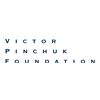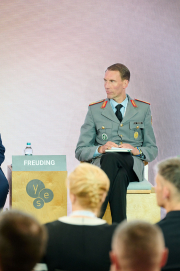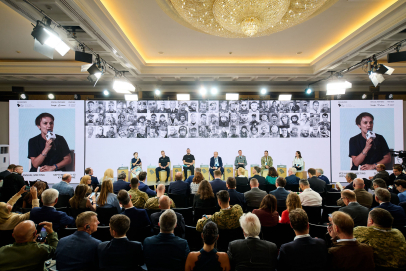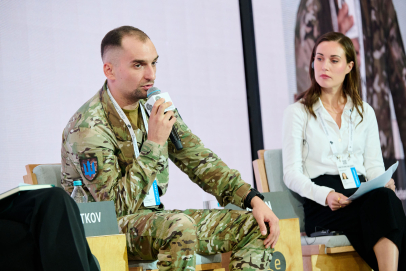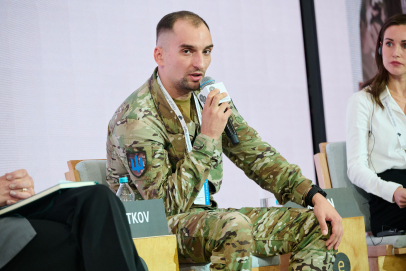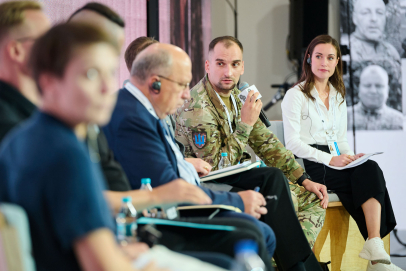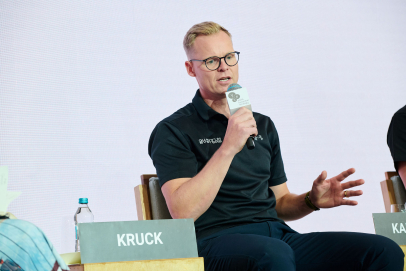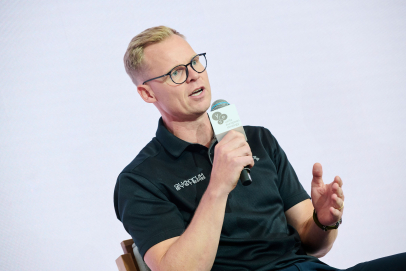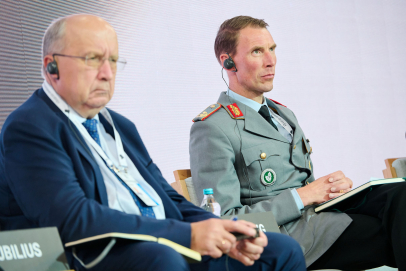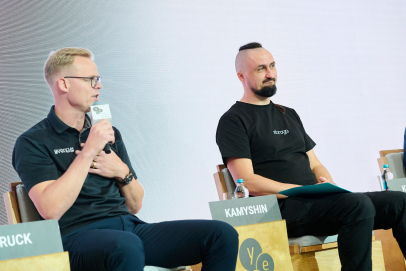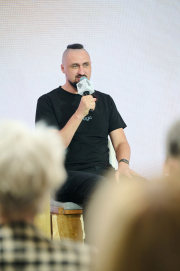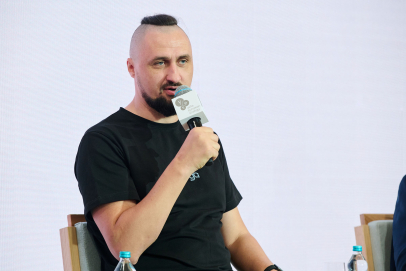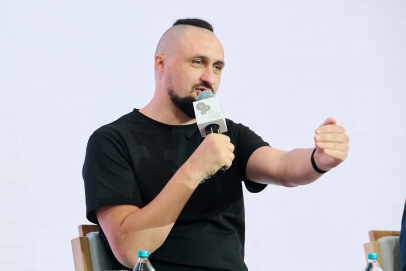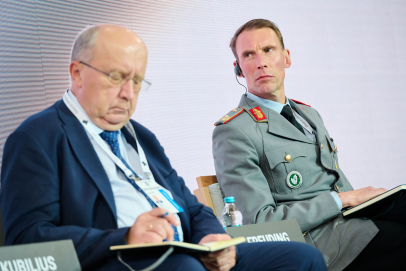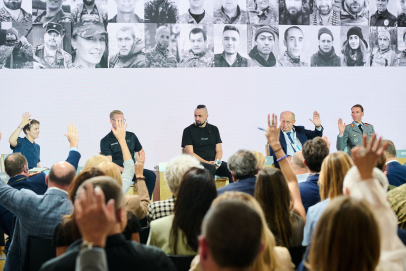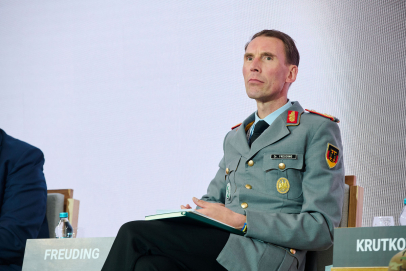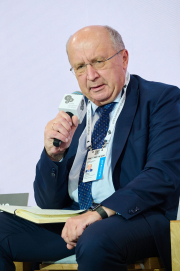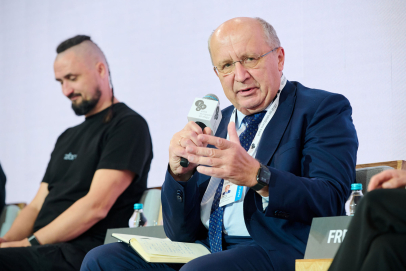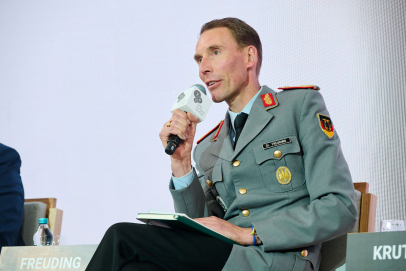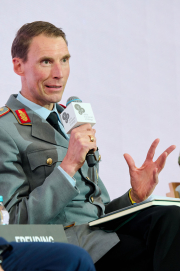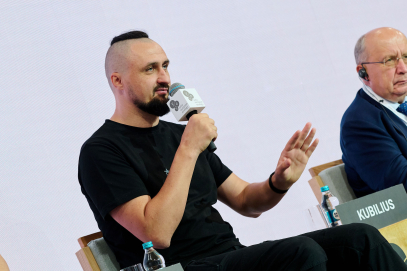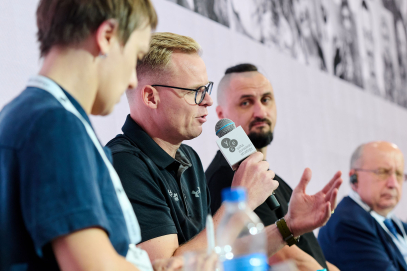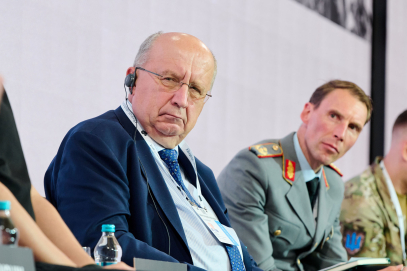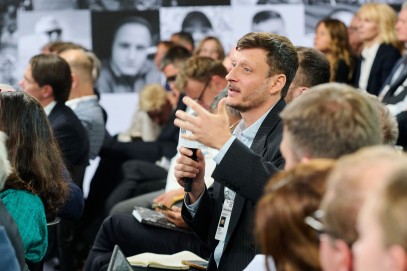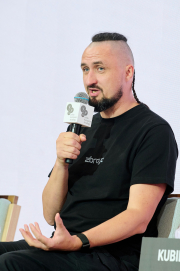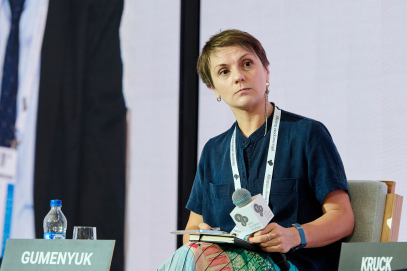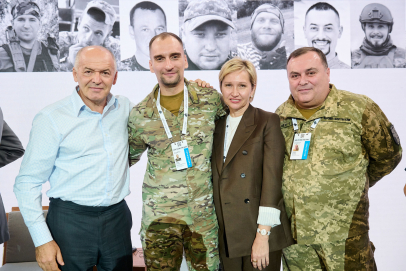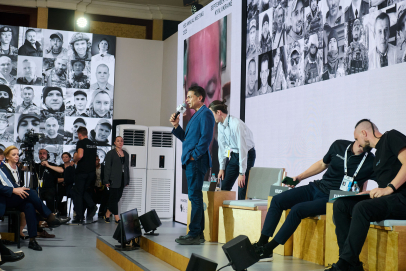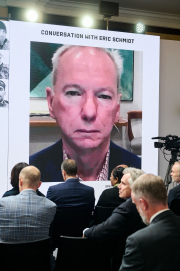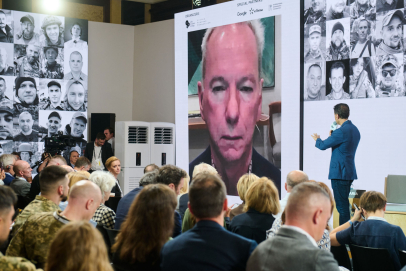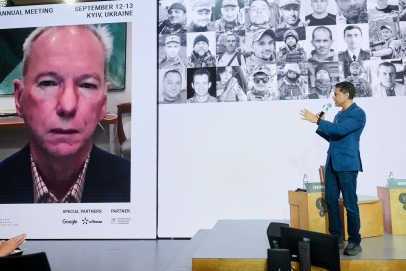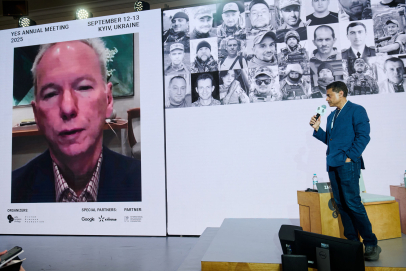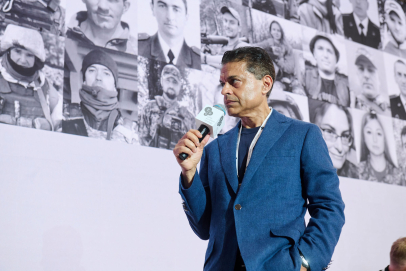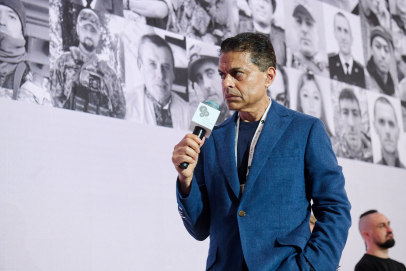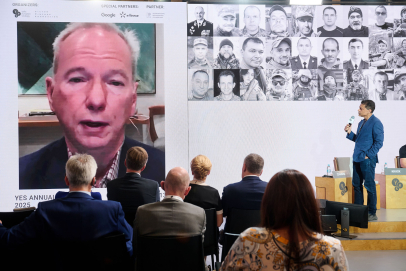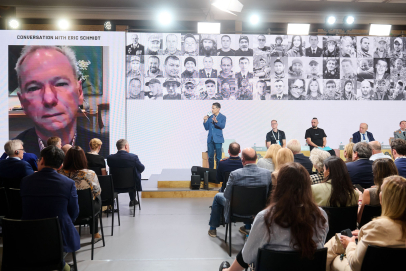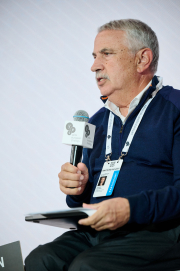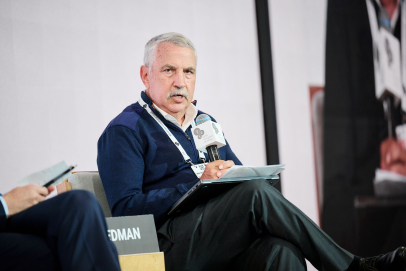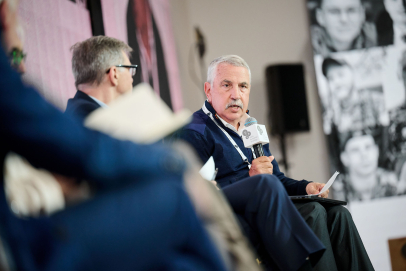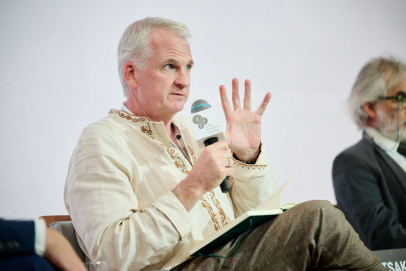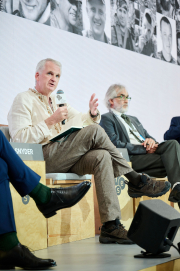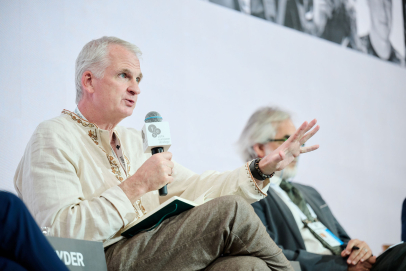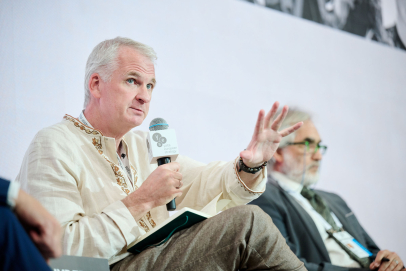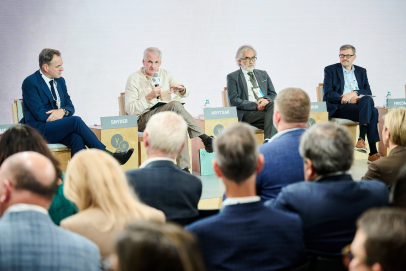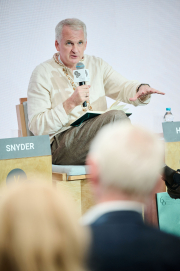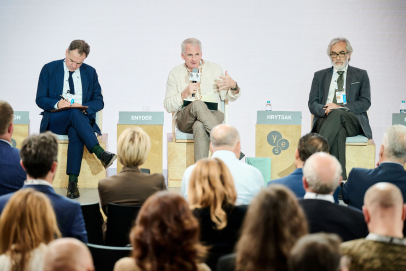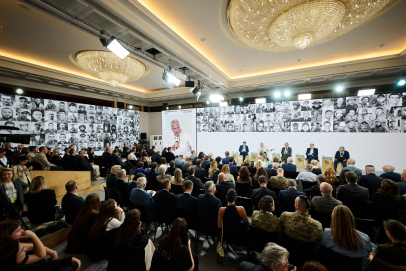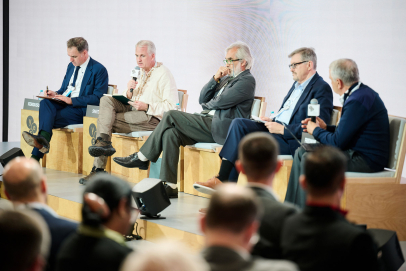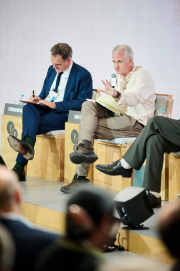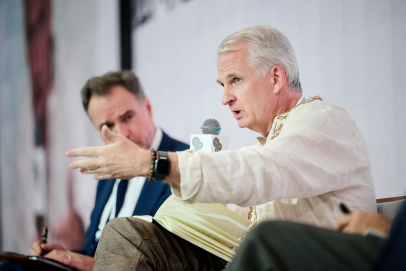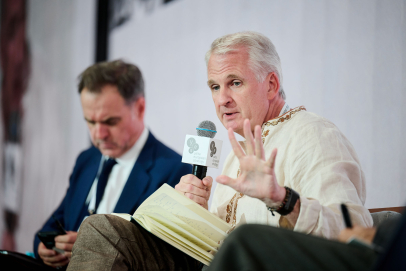Press about us
Bright Light, Big Money
There are some kinds of art that only museums or the very rich can collect. Among these are major pieces of “light art,” usually made by sculpting light in very large natural or industrial spaces. Switzerland’s Hess Family Estates makes wine on four continents, and its 77 year-old chairman, Donald Hess, is a long-time collector of Francis Bacon, Anselm Kiefer and other important artists. But his newest gallery on the world’s highest vineyard, at Colomé in Argentina, is dedicated to only one light artist: James Turrell.
Light art has been around for just short of a century. The first piece, called Light-Space Modulator, was made in 1922 by László Moholy-Nagy. Not everyone got the industrial-looking contraption made of shadow-casting wires, glass, and perforated metal. When the Hungarian took Light-Space Modulator through U.S. customs in 1937, officers refused to class it as art. Nonetheless, some big names, such as Robert Rauschenberg and Jasper Johns, have worked with light since, making it arguably the true medium of the 20th century. For purist collectors like Hess, however, real light artists work with nothing else, and of these, James Turrell, an American Quaker who turns 70 this year, is the acknowledged grand master.
Turrell’s Sistine Chapel is in Arizona’s Painted Desert. In 1977, the artist bought an extinct volcano, called Roden Crater, outside Flagstaff. He has spent the last 35 years, and an estimated $45 million of institutional and private contributions, working on his masterpiece. Of the twenty works Roden Crater will eventually contain, around a third are finished, including the Alpha Tunnel, an 845 foot borehole designed to focus a perfect disc of light on a slab of white stone. Like all of Turrell’s work, this so-called Skyspace relies on two things: natural light and the human eye. Look at the disc and it slowly changes shape and color, our vision constantly shifting to accommodate Turrell’s astonishing creation.
When Roden Crater is finished – and no-one knows when that will be — it will be the world’s biggest artwork, a combination of sculpture, solar observatory and Egyptian pyramid. Until then, access is limited to the wealthy patrons, like Hess, who have between them contributed tens of millions of dollars to Turrell’s project. “I have been to Roden several times,” Hess says. “It is a fantastic, crazy work.”
Buying Bacons is one thing: you can hang them, move them around and, if necessary, sell them again. Buying Turrells is quite another. Light artworks tend to be site-specific, and on an epic scale – so much so that they usually spend years as blueprints before their owners can have them built.
“I bought the first of my [nine] Turrells, Stufe White (1967), in the early ‘Seventies,” says Hess, from his home in Bern, Switzerland. “For years, I had these big, grey books in my library here – contracts from James, with minute instructions on how each work was going to be made. One day, I thought: ‘I’ll be damned if I die without seeing them.’ So I went around museums, offering to lend my Turrells if they would build them. And they all said, ‘You must be crazy.’”
So in 2009 Hess built his own, 18,000 square foot James Turrell Museum in Argentina. “I rang James to tell him what I was planning and he said, ‘Great! I love Buenos Aires!’” Hess recalls. “I had to break it to him that it was not quite BA, that it was a two hour flight and five hour drive away.”
Undeterred, Turrell came to Colomé and designed his own gallery. Last year, the museum attracted 3,500 visitors; that’s hardly the 85,000 who went around the Hess Family Collection of wines in Napa, California, but not bad considering where it is. As to the near-impossibility of selling his Turrell works, Donald Hess is sanguine. “Wine is my business. If you want to drink it, you have to pay,” he says. “Art is my hobby, and you can enjoy it for free. I don’t do it for the money.”
Meanwhile, eight thousand miles away, in southeast Ukraine, light art also serves a practical purpose in the grim industrial town of Dnepropetrovsk. Dnepropetrovsk was a manufacturing base for ballistic missiles, and, until 1991, closed to foreigners. Last October, however, the Ukrainian steel magnate and major art collector, Victor Pinchuk, opened the Interpipe metal works on the Dnieper River, the first large-scale steel mill to be built in Ukraine for 40 years.
Pinchuk’s electric smelters claim to be among the world’s most environmentally advanced – not the smoke-belching Soviet-era plants of the past – and Pinchuk wanted to signal this fact. So he commissioned the Danish light artist, Olafur Eliasson, to create Dnepropetrovsk Sunrise, the 200-foot-tall sun, light-emitting and made from steel, which now shines from the Interpipe compound. By night, the work doubles as a moon.
“In post-Soviet Eastern Europe, it’s important to send a message about innovation and modernization,” Pinchuk says. “Olafur’s Sunrise symbolizes a new start, a new light. It combines two artworks – the sun and the mill which I, as an engineer, also see as art.” Four more of Eliasson’s monumental light pieces are built into the factory’s structure.
“He loved the craziness of creating a new astronomy for Dnepropetrovsk,” says Pinchuk. What did this craziness cost? The Ukrainian industrialist merely notes that the entire Interpipe project came in at $700 million, of which Eliasson’s fee was a part. “That is certainly the highest price I have ever paid for an artwork,” he says.
While that’s no doubt so, smart collectors like Hess and Pinchuk also use the visibility of light art to attract visitors to their businesses, subtly changing the economics of their unusual collections.




